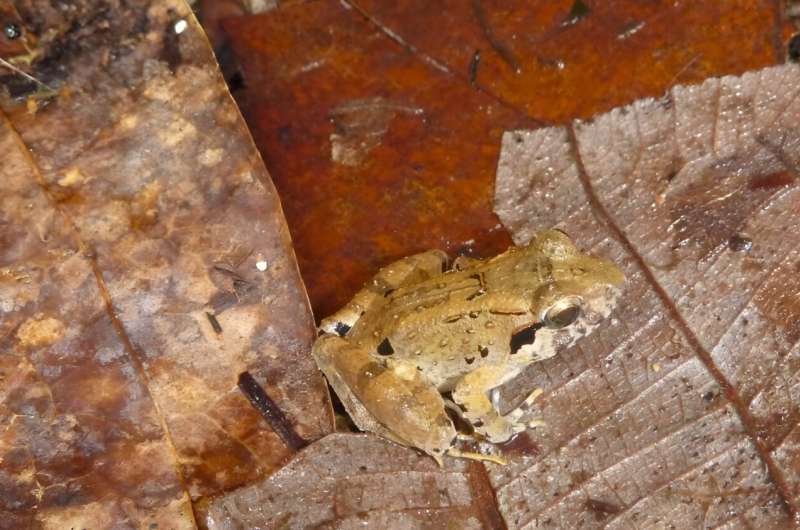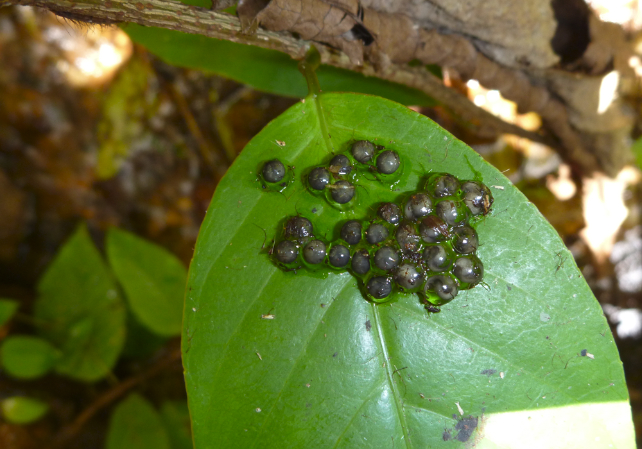The verdant, volcanic landscapes of Sulawesi in Indonesia are home to various species of frogs bearing teeth, some with peculiar reproductive behaviors. Among them is Limnonectes larvaepartus, the sole frog known globally to birth live tadpoles. Unveiling yet another secret, this tropical island now introduces the world's tiniest frog with fangs.
Linked to other fanged frog species, the recently identified Limnonectes phyllofolia conforms to the traditional method of laying amphibian eggs. A group of herpetologists from the United States and Indonesia stumbled upon a distinctive sight while trekking through the rainforest: leaves and mossy boulders elevated several feet above the ground, hosting glassy, black frog eggs.
This immediately captivated the researchers because frog eggs typically need water to prevent their gelatinous coating from drying. Soon after, they spotted coin-sized, mottled-brown frogs safeguarding their nests. Lead author Jeff Frederick, a wildlife ecologist at the Field Museum in Chicago, remarked, "Usually, when we search for frogs, we focus on stream banks or wade through streams to spot them directly in the water."

However, their observation of frogs tending to nests perched on leaves was a departure from the norm. These guardian frogs coat their eggs with substances that maintain moisture and protect against bacteria and fungi. Surprisingly, all the attending frogs were male. Frederick noted, "While male egg-guarding behavior isn't unheard of in frogs, it's relatively rare."
This newfound frog species displayed minuscule teeth on its upper jaw and two small fangs on its lower jaw, an unusual trait as frogs typically only possess upper jaw teeth. Frederick highlighted, "Compared to other fanged frogs on the island, this new species is tiny."

While Sulawesi hosts larger saber-toothed frogs, this new species weighs merely around two grams—approximately the weight of a dime. It earned the moniker Limnonectes phyllofolia, derived from "leaf-nester."
In Southeast Asia, numerous frog species evolved fangs for territorial battles, mating, and hunting prey like centipedes and crabs. Leaf-nesting frogs, not reliant on waterways for reproduction, may not need large fangs to compete in crowded streams for optimal egg-laying spots. This could elucidate the smaller fang size compared to other island frogs, as hypothesized by the researchers.
Prior studies revealed frog fangs evolving independently at least four times among all frog species. Examination of these species' behaviors and diets suggests that frog fangs evolving due to sexual selection tend to be relatively larger than those arising from other environmental pressures.
Fanged frogs have been discovered in Cambodia, Vietnam, West Africa, and South America. Scientists also identified fanged tadpoles of the vampire flying frog (Rhacophorus vampyrus) in the lush evergreen forests of southern Vietnam



















